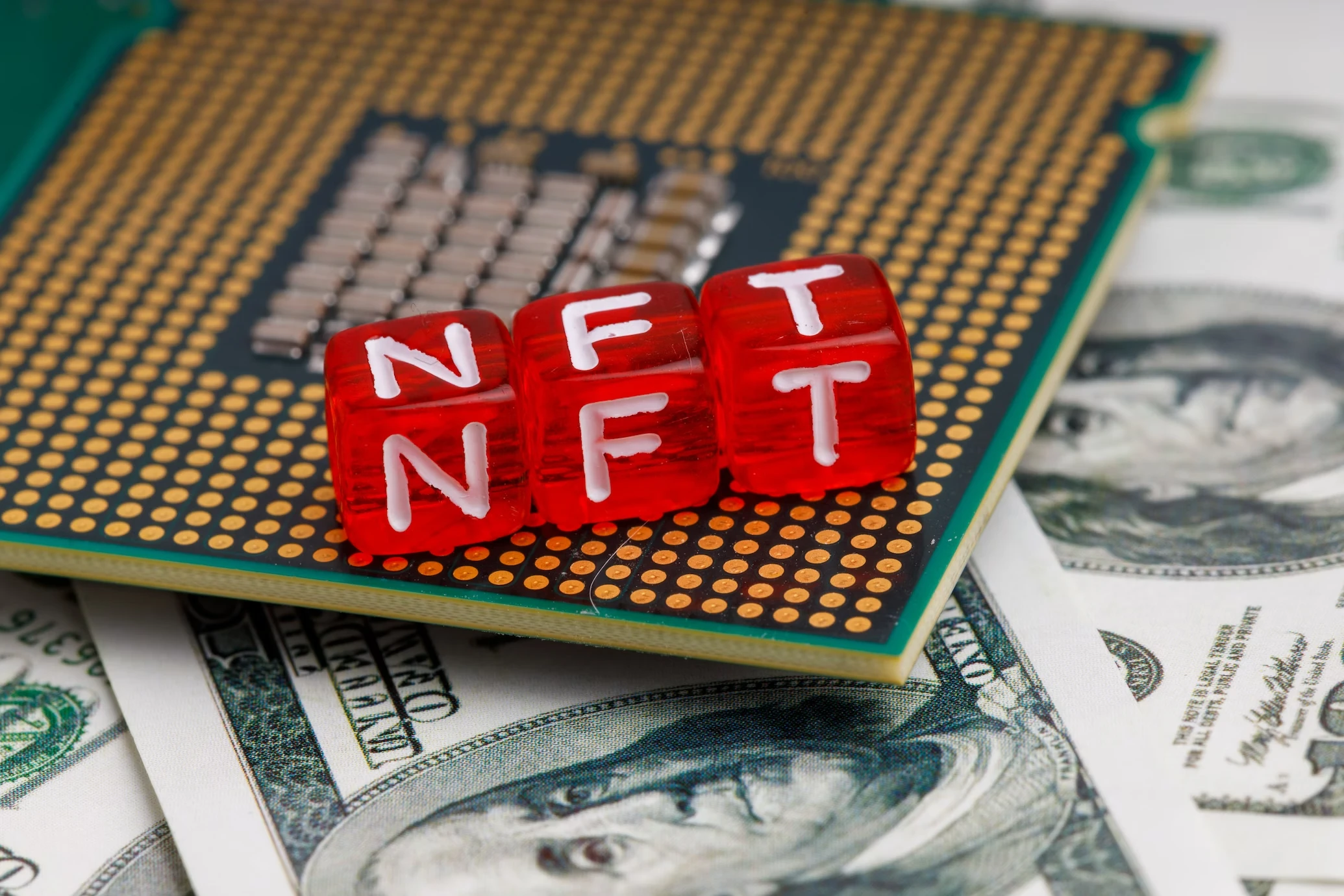
This website uses cookies
We use Cookies to ensure better performance, recognize your repeat visits and preferences, as well as to measure the effectiveness of campaigns and analyze traffic. For these reasons, we may share your site usage data with our analytics partners. Please, view our Cookie Policy to learn more about Cookies. By clicking «Allow all cookies», you consent to the use of ALL Cookies unless you disable them at any time.
Blockchain technology has emerged as a transformative force in the field of finance and beyond. It is a decentralized and distributed ledger technology that allows for secure, transparent, and immutable record-keeping. The key principles underlying blockchain include decentralization, transparency, immutability, and consensus mechanisms.
Blockchain's significance lies in its potential to revolutionize financial innovation. By removing intermediaries and enabling peer-to-peer transactions, blockchain has the power to streamline processes, reduce costs, increase efficiency, and enhance security in financial systems. Additionally, its transparency and immutability provide increased trust and accountability, fostering new opportunities for economic growth and development. In this article, we will delve into the definition of blockchain technology and explore its key principles, as well as discuss its role as a catalyst for financial innovation.
The Role of Blockchain Technology in the Financial Industry
Blockchain technology has emerged as a groundbreaking innovation with the potential to revolutionize various sectors, and the financial industry is no exception. This essay explores the role of blockchain technology in the financial industry and its implications for traditional financial systems. By providing a decentralized and transparent platform for secure transactions and data management, blockchain has the capacity to enhance efficiency, reduce costs, mitigate fraud, and empower individuals with greater financial control.
Enhancing efficiency and security in financial transactions
In today's world, financial transactions play a crucial role in the economy and commercial activities. However, their efficiency and security are key aspects that require continuous improvement and innovation.
1. Implementation of blockchain technology. Originally developed for use in cryptocurrencies, blockchain technology has gained significant recognition in the financial sector. Blockchain provides an immutable and transparent record of transactions, eliminating the need for trust in intermediaries and reducing the risks of fraud.
2. Adoption of biometric authentication. Traditional authentication methods such as passwords or PIN codes can be compromised or lost. Biometric authentication, such as fingerprint scanning or facial recognition, offers a more reliable and secure means of user identification.
3. Utilization of artificial intelligence (AI). AI technologies can be employed to analyze large volumes of data and detect suspicious activity. Machine learning and AI algorithms can help identify anomalies, suspicious patterns, and prevent financial fraud at early stages.
4. Advancement of cryptographic methods. Cryptography forms the foundation of financial transaction security. Continuous improvement of cryptographic methods, such as encryption and digital signatures, helps ensure confidentiality, integrity, and authenticity of data in financial operations.
5. Implementation of multi-factor authentication (MFA). MFA combines multiple authentication methods, such as passwords, biometrics, and one-time codes, to enhance the security level of transactions. This makes it more challenging for malicious actors, as they would need to bypass multiple layers of authentication.
Enhancing the efficiency and security of financial transactions plays a crucial role in establishing trust and stability in the financial system. By leveraging cutting-edge technologies and methods, it is possible to mitigate risks, improve efficiency, and safeguard the interests of all participants in financial operations.
Eliminating intermediaries and reducing transaction costs
The advancement of technology has revolutionized various industries, including finance and business transactions. One significant development is the elimination of intermediaries and the subsequent reduction in transaction costs.
1. Definition of Intermediaries
Intermediaries, in a transactional context, refer to third parties or middlemen that facilitate transactions between two or more parties. These intermediaries may include banks, brokers, agents, or other entities that play a role in facilitating, verifying, and coordinating transactions.
2. Advantages of Eliminating Intermediaries
a. Cost Reduction: Removing intermediaries can lead to cost savings by eliminating fees, commissions, and other associated transaction costs.
b. Increased Efficiency: Direct peer-to-peer transactions can streamline processes, reducing complexity, and minimizing delays.
c. Enhanced Security: By eliminating intermediaries, the risk of data breaches or unauthorized access to sensitive information can be reduced.
d. Transparency: With the use of technology, transactions can become more transparent as participants have access to real-time information and transaction history.
3. Technology-enabled Solutions
a. Blockchain Technology: Blockchain enables decentralized and secure transactions, eliminating the need for intermediaries while ensuring transparency and immutability.
b. Smart Contracts: Self-executing contracts programmed on blockchain platforms can automate and enforce transaction terms, reducing the need for intermediaries.
c. Peer-to-Peer Marketplaces: Online platforms facilitate direct transactions between buyers and sellers, bypassing traditional intermediaries and reducing costs.
4. Challenges and Considerations
a. Regulatory Compliance: The elimination of intermediaries may raise legal and regulatory challenges, requiring proper adherence to compliance frameworks.
b. Trust and Reputation: Without established intermediaries, building trust and verifying counterparties become crucial in peer-to-peer transactions.
c. Scalability: Implementing alternative solutions on a larger scale may pose technical challenges and require infrastructure upgrades.
5. Industry Examples
a. Financial Services: Decentralized finance (DeFi) applications leverage blockchain to eliminate intermediaries in lending, trading, and asset management.
b. Real Estate: Blockchain-based platforms enable direct property transactions, bypassing real estate agents and reducing transaction costs.
c. Supply Chain Management: Blockchain facilitates transparent and efficient supply chain transactions, reducing the need for intermediaries and ensuring traceability.
The elimination of intermediaries brings numerous benefits, such as cost reduction, increased efficiency, enhanced security, and transparency. Technology-enabled solutions like blockchain and peer-to-peer marketplaces have enabled direct transactions, disrupting various industries. However, challenges related to compliance, trust, and scalability need to be addressed for successful implementation. As industries continue to adopt innovative solutions, eliminating intermediaries and reducing transaction costs will shape the future of commerce and finance.
Improving transparency and trust in the financial system
Attention to transparency and trust in the financial system is crucial for effective functioning and stability of financial markets. Below are several key measures that can contribute to improving transparency and trust in the financial system:
1. Expanded reporting: Strengthening reporting requirements for companies and financial institutions can enhance the accessibility of information and understanding of the financial situation. This includes disclosing financial indicators, operational risks, significant events, and indications of conflicts of interest.
2. Enhanced regulatory framework: Developing and improving laws and rules that regulate the activities of financial institutions and markets contributes to creating a clear and predictable environment. It is also important to ensure adequate punishment for violations and fraudulent acts to maintain accountability and prevent abuses.
3. Audit and assessment capabilities: Improving audit activities and evaluation processes can enhance the credibility and reliability of financial information. This includes developing more rigorous auditing standards, independent assessments, and transparent asset evaluation procedures.
4. Strengthening the role of regulators: Regulators should actively monitor the activities of financial institutions, apply effective control measures, and enforce punishments for violations. Regulatory bodies should also engage in international cooperation to exchange information and enhance efforts to combat financial crimes.
5. Adoption of technological innovations: Leveraging new technologies such as blockchain and artificial intelligence can promote transparency and efficiency in the financial system. For example, implementing blockchain can improve transaction traceability and eliminate suspicious operations.
6. Education and awareness: Providing education and raising public awareness about financial matters, investments, and risks are crucial. This helps increase financial literacy, which in turn contributes to improving transparency and understanding of the financial system.
7. Improving ethical standards: Codes of conduct and ethical standards can be developed and adopted by financial institutions and professional organizations to promote responsible behavior and prevent conflicts of interest.
8. Promoting collaboration: Financial institutions, regulators, and supervisory bodies should actively collaborate to exchange information and coordinate actions. International cooperation also plays a vital role in combating international financial fraud and money laundering.
9. Fostering FinTech innovation: Supporting and regulating innovative FinTech companies can stimulate the development of new technological solutions to enhance transparency and improve access to financial services for consumers.
10. Strengthening financial education and consumer protection: Including financial literacy in school curricula and conducting informational campaigns can help create more informed and protected financial consumers.
11. Actively combating financial fraud: Implementing and improving systems to combat money laundering, terrorist financing, and other forms of fraud can enhance control and prevent negative impacts on the financial system.
12. Expanding the role of independent auditors and consultants: Involving independent experts and third parties for auditing, verification, and consultation can increase reliability and objectivity of financial information, providing additional assurance to stakeholders.
13. Open data and information sharing: Public access to certain financial data and enhanced information exchange between financial institutions and regulators can increase transparency and facilitate monitoring of activities in the financial system.
14. Active involvement of the public and stakeholders: Including the public, shareholders, customers, and other stakeholders in decision-making processes and policy formation can contribute to considering diverse opinions and interests, strengthening trust in the financial system.
By using a comprehensive approach, including a combination of these measures, transparency and trust in the financial system can be significantly enhanced, leading to a more stable and efficient functioning of financial markets.
Expanding access to financial services for the unbanked population
Expanding access to financial services for the unbanked population involves implementing strategies to provide banking services, such as savings accounts, loans, and insurance, to individuals who do not have access to traditional financial institutions. Some approaches to achieve this goal include:
1. Mobile banking: Leveraging mobile technology to offer financial services, including mobile wallets, payments, and transfers, through a network of agents or directly on mobile devices.
2. Microfinance institutions: Supporting and promoting the establishment of microfinance institutions that provide small loans and other financial services to individuals in underserved communities.
3. Branchless banking: Establishing banking infrastructure in underserved areas by leveraging alternative delivery channels like agent banking, where authorized individuals can conduct basic banking transactions on behalf of a bank.
4. Regulatory reforms: Implementing reforms to relax regulations that may hinder the provision of financial services, fostering innovation and competition, and encouraging financial institutions to serve the unbanked population.
5. Financial literacy programs: Offering education and training programs to enhance financial literacy, ensuring that individuals have the necessary knowledge and skills to effectively manage their finances and make informed financial decisions.
6. Partnerships and collaborations: Encouraging partnerships between financial institutions, governments, technology companies, and non-profit organizations to combine resources, expertise, and technology to reach the unbanked population.
7. Customer-centric approach: Designing products and services tailored to the unique needs and circumstances of the unbanked population, taking into account factors like low income, informal employment, and limited collateral options.
By implementing these strategies and by leveraging technology, policy changes, and partnerships, it is possible to expand access to financial services and empower the unbanked population to participate in the formal financial system, fostering economic growth and poverty reduction.
Applications of Blockchain Technology in Financial Innovation
Blockchain technology has revolutionized numerous industries, and the financial sector is no exception. Its decentralized and immutable nature has opened up new possibilities for financial innovation and has the potential to reshape the way we conduct transactions, manage assets, and establish trust in the digital age. The applications of blockchain technology in financial innovation are diverse, ranging from streamlined payments and improved identity verification to smart contracts and decentralized finance (DeFi).
Cryptocurrencies and decentralized finance (DeFi)
Cryptocurrencies and decentralized finance (DeFi) have emerged as significant areas of innovation within the financial industry. Cryptocurrencies, such as Bitcoin and Ethereum, operate on secure, decentralized networks based on blockchain technology. They enable peer-to-peer transactions without the need for intermediaries like banks.
Decentralized finance (DeFi) refers to a set of financial applications and services built on blockchain platforms. DeFi aims to recreate traditional financial systems in a decentralized manner, allowing users to access services like lending, borrowing, trading, and earning interest without relying on central authorities.
Key characteristics of cryptocurrencies and DeFi include:
1. Decentralization: Cryptocurrencies and DeFi protocols operate on decentralized networks, where no single entity has control over the platform. This improves security and reduces the risk of censorship or manipulation.
2. Transparency: Blockchain technology provides a transparent and immutable ledger of all transactions. This transparency enhances trust and allows for easy auditability.
3. Smart Contracts: DeFi platforms utilize smart contracts, programmable agreements that automatically execute transactions based on predefined conditions. Smart contracts enable automation, efficiency, and eliminate the need for intermediaries.
4. Interoperability: Cryptocurrencies and many DeFi protocols are built on open-source platforms. This allows for interoperability between different projects, facilitating the seamless movement of assets and liquidity across various platforms.
5. Financial Inclusion: Cryptocurrencies and DeFi have the potential to increase financial access for unbanked populations worldwide, facilitating cross-border transactions, and promoting financial empowerment.
Despite their advantages, there are challenges associated with cryptocurrencies and DeFi, including regulatory concerns, market volatility, scalability issues, and the risk of smart contract vulnerabilities or hacking.
Despite these challenges, cryptocurrencies and DeFi continue to grow, attracting significant attention from investors, financial institutions, and governments. They hold the promise of transforming traditional financial systems, improving financial inclusivity, and enabling new, innovative financial services and applications.
Smart contracts and automation of financial operations
Additional points about smart contracts and the automation of financial operations:
1. Transparency and Auditability: Smart contracts operate on blockchain networks, which provide transparent and immutable transaction records. This allows for real-time auditing and verification of financial operations, reducing the risk of fraud and improving accountability.
2. Cost Efficiency: Automation through smart contracts eliminates the need for intermediaries, resulting in cost savings for businesses and consumers. It reduces fees associated with traditional financial transactions, such as processing fees, paperwork costs, and manual reconciliation expenses.
3. Faster Transactions: Smart contracts enable near-instantaneous settlement of financial transactions. By removing time-consuming manual processes and relying on automated execution, transactions can be completed in seconds or minutes, significantly reducing settlement times compared to traditional methods.
4. Increased Accessibility: Smart contracts have the potential to provide financial services to individuals and businesses in underserved areas without relying on traditional banking infrastructure. This inclusivity opens up opportunities for financial inclusion and economic empowerment.
5. Programmability and Innovation: Smart contracts allow for the creation of programmable money, where the terms and conditions of financial agreements can be encoded directly into the contract. This programmability enables the development of innovative financial products and services, such as decentralized lending, tokenization of assets, and automated investment strategies.
6. Enhanced Security: Since smart contract code is stored in a decentralized manner and requires consensus from the network, it is highly secure against hacking and tampering. This added security can help reduce the risks associated with financial operations, providing greater peace of mind to participants.
7. Interoperability: Smart contracts can be designed to be compatible with various blockchain platforms, enabling interoperability between different systems. This allows for seamless integration of financial operations across different networks and ecosystems, fostering collaboration and expanding the scope of automated financial services.
Overall, smart contracts and the automation of financial operations hold significant potential to revolutionize the way transactions are conducted and financial agreements are enforced. They offer benefits such as efficiency, transparency, cost savings, accessibility, and security, unlocking new opportunities for innovation and financial inclusion.
Asset tokenization and enhanced liquidity
Asset tokenization and enhanced liquidity have gained significant traction in recent years due to the numerous benefits they offer. Here are some additional points to consider:
1. Improved Market Accessibility: Asset tokenization allows for fractional ownership, enabling investors to own smaller portions or shares of an asset. This fractional ownership model expands market accessibility, enabling a broader range of investors to participate in previously illiquid or expensive markets.
2. Enhanced Liquidity: Traditional assets, such as real estate or private equity, often suffer from low liquidity, making it difficult to sell or transfer ownership. Tokenizing these assets introduces liquidity by enabling token holders to trade their digital assets on secondary markets, enhancing market efficiency and enabling investors to acquire or sell their assets more easily.
3. 24/7 Trading: Digital tokens can be traded at any time and from anywhere with an internet connection. This accessibility breaks the barriers of traditional trading hours and geographical limitations, contributing to increased liquidity and market activity.
4. Reduced Transfer Costs: Tokenization streamlines the transfer of ownership by eliminating intermediaries and associated fees. Transferring digital tokens on blockchain networks can be faster, more secure, and less costly compared to traditional methods.
5. Transparency and Security: Blockchain-based asset tokenization provides increased transparency and security through the use of immutable and auditable transaction records. This transparency can help establish trust among participants and attract more investors to the market.
6. Fractional Investment Opportunities: Asset tokenization enables fractional investment, allowing individuals to invest in high-value assets with smaller amounts of capital. This increased accessibility broadens investment opportunities and empowers a wider range of investors.
7. Potential for Automated Asset Management: The integration of smart contracts with tokenized assets opens up possibilities for automated asset management. Smart contracts can automatically execute predefined conditions, such as distributing dividends or managing lease agreements, reducing administrative overhead.
The combination of tokenization and enhanced liquidity has the potential to revolutionize traditional financial markets, making them more inclusive, efficient, and accessible to a broader range of participants.
Conclusion
Blockchain's unique attributes—decentralization, transparency, immutability, and enhanced security—have shown immense potential in addressing long-standing challenges in the financial industry. From streamlining processes to reducing fraud, blockchain offers a new paradigm for trust and collaboration in financial transactions.
The exploration of use-cases, from cryptocurrencies and digital assets to decentralized finance (DeFi) models and smart contracts, showcases blockchain's versatility. It's not just a technological advancement; it's a foundation for rethinking and reshaping financial systems worldwide.
However, this journey is not without its challenges. Scalability, regulatory hurdles, and integration with existing financial systems remain significant obstacles. The evolving regulatory landscape, while aiming to harness the benefits of blockchain, must also address risks related to compliance, data privacy, and security.
The future of blockchain in finance looks promising, with continuous innovations and evolving applications. The integration of blockchain with other emerging technologies like AI and IoT is expected to further expand its capabilities and applications. This convergence could potentially lead to more inclusive, efficient, and secure financial systems globally.
As we move forward, the collaboration among technologists, financial experts, regulators, and policymakers will be crucial. This synergy is necessary not only for addressing the challenges but also for realizing the full potential of blockchain in revolutionizing the financial landscape.
In summary, blockchain technology is more than a mere buzzword; it's a key driver for financial innovation and a catalyst for redefining the future of finance. Its journey from a niche concept to a mainstream financial tool underscores its significance and the vast possibilities it holds. The ongoing developments in this field are not just incremental improvements but steps towards a more transparent, efficient, and secure financial future for everyone.




